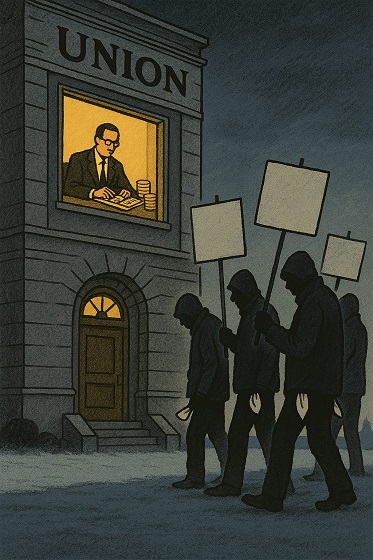Alberta
How will Alberta’s new Premier deal with Ottawa? These are the approaches of four leading candidates
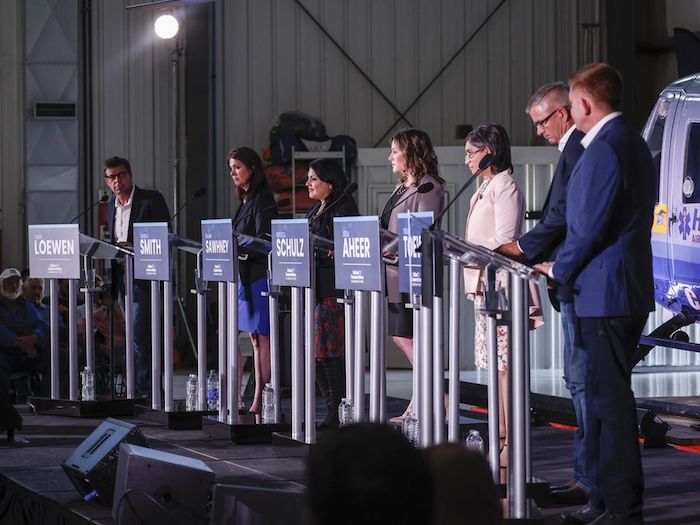
No matter who wins the UCP Leadership race, you can count on a turbulent relationship with Ottawa. Albertans have long had issues with how the Liberal government stifles the critical Oil and Gas industry. Now Alberta’s farmers are finding out what that feels like, as the federal government is introducing measures to reduce the amount of nitrogen fertilizer they use.
To add to the level of animosity between the two governments, a growing number of Alberta UCP supporters are voicing dissatisfaction over Covid restrictions and mandates. This group is active politically, and seems to be rallying behind frontrunner Daniel Smith and likeminded Todd Loewen. The idea is to avoid future restrictions and mandates provincially, and stand up against any federal measures.
It’s no coincidence then, that the leading candidates in the UCP race all have strong platform initiatives to stand up to Ottawa. Here’s what they look like, beginning with Danielle Smith’s “Alberta Sovereignty Act.
Danielle Smith – Alberta Sovereignty Act
It is clear that my proposed Alberta Sovereignty Act has thus far been the central issue of the UCP leadership campaign. Tens of thousands of Albertans have embraced the idea of actually standing up to Ottawa’s attacks against us, rather than usual ineffective letter writing campaigns and complaining.
It’s been both exciting and heartwarming to see hope restored to so many in our Province, and I want them to know how much their faith and confidence in this initiative strengthen my personal resolve to see it through.
Unsurprisingly, many in the media and establishment do not support the Alberta Sovereignty Act and have turned to the tried and tested methods of fearmongering and disinformation to discredit the idea. Unfortunately, some of my fellow UCP candidates may have fallen into their trap.
My hope in releasing this FAQ sheet on the Alberta Sovereignty Act, is that more Albertans and MLAs will take a thoughtful look at this policy, and join the growing majority of Albertans who want to see us stand up to Ottawa, restore our constitutional rights, and take control of our future in this manner.
I am sincerely looking forward to implementing this critically important piece of legislation together.
– Danielle Smith
What is the Alberta Sovereignty Act?
A proposed provincial law that would affirm the authority of the Provincial Legislature to refuse enforcement of any Federal law or policy that violates the jurisdictional rights of Alberta under Sections 92 – 95 of the Constitution or that breaches the Charter Rights of Albertans.
How will it be used?
When the Federal Government institutes a law or policy that appears to violate the constitution or Charter, the Government of Alberta may introduce a Special Motion for a free vote of all MLAs in the Legislature. The Special Motion would include the following:
1. Identification of the Federal law or policy that it deems to be in violation of the Constitution
2. An Outline of the specific harms that violation of the Constitution imposes on the citizens of Alberta
3. Description of the specific actions the Province will take to refuse the enforcement of that Federal law or policy in Alberta
4. A Declaration that by authority of the Alberta Sovereignty Act and notwithstanding the specific Federal law or policy in question, it shall not be enforced by the Provincial Government within Alberta in the manner outlined by the Special Motion
5. Imposition a specific time frame (no more than 24 months) by which the Special Motion will be reviewed in the Legislature
Will a Premier or Governing Party be able to refuse enforcement of any Federal Law or Policy they don’t like?
No, the Alberta Sovereignty Act may not be used unless specifically authorized by way of a free vote of all elected MLAs in the Alberta Legislature, as explained above.
What examples of Federal Laws will the Alberta Sovereignty Act be applied to?
Examples could include:
– Federal mandatory vaccination policies – Charter violation
– Use of Emergencies Act to jail & freeze accounts of peaceful protesters – Charter violation
– Bill C-69 ‘No New Pipelines’ Law – found unconstitutional by Alberta Court of Appeal
– Mandatory cuts to fertilizer use by Alberta Farmers – violation of s.95
– Mandatory emissions and production cuts to Alberta energy projects – violation of s.92A
– Federal gun grabs – violation of s.92(13)
Is the Alberta Sovereignty Act about Separation from Canada?
No, the entire objective of the Alberta Sovereignty Act is to assert Alberta’s Constitutional Rights within Canada to the furthest extent possible by effectively governing itself as a Nation within a Nation, just as Quebec has done for decades and as Saskatchewan is also now considering.
If anything, the restoration of provincial rights and autonomy of every province from the destructive overreach of Ottawa is likely the only viable way for Canada to survive and flourish into the future. Ottawa’s “divide, control and conquer’ policies have Canada on a path of division and disunity. Alberta can and must lead on this issue going forward.
Is the Alberta Sovereignty Act illegal or does it run contrary to the rule of law?
No, just the opposite.
Over the last several years the Federal Government has triggered a constitutional crisis through repeated lawless attacks on provincial constitutional rights and the Charter.
The Trudeau Government has effectively imposed economic sanctions against Alberta (and parts of Saskatchewan and BC) that have resulted in economic chaos.
Hundreds of billions in investment and tax revenues, and hundreds of thousands of jobs, have been lost to these sanctions as investors around the world find it too risky to do business in Alberta’s energy industry. In fact, no new major development of our world class oil sands has been commenced in almost 20 years as a result.
The idea expressed by some UCP leadership candidates that the Alberta Sovereignty Act would “cause chaos” in the markets is naive in the extreme. The “chaos” is already here and has been caused by both Ottawa’s unlawful policies and an utter lack of provincial leadership on effectively pushing back against those attacks.
The fact is the Alberta Sovereignty Act reimposes constitutional rule of law on a lawless Ottawa by reaffirming the critical import of respecting the powers and jurisdiction of the Provinces under the Canadian Constitution.
Brian Jean – Autonomy For Albertans Act
|
I started with policies designed to change how Alberta reacts to the federal government and Canada. I want us to stop being defensive and go on the offensive. We have to stop covering up and we have to take the fight to Canada. The five sets of actions that will protect and enhance Alberta’s Autonomy Within Canada are:
These actions and this approach is very different than how Alberta has traditionally acted. This is very different from what the other leadership candidates are proposing. First this is about acting, about doing something. The “Alberta Sovereignty Act” proposal is purely defensive and reactive. Instead of saying to Canada “we won’t enforce your rules if you come after us,” I am saying that we need to take the initiative.
|
 |
|
My proposals are about taking ACTION and going on the offense. Danielle Smith proposes a purely defensive strategy that surrenders on past fights. Travis Toews has no strategy at all in this area — he wants to continue Jason Kenney’s practice of writing stern and meaningless letters whenever we get stepped on.
When we open the Constitution, we can deal with the issues of: pipelines and right-of-ways, access to tidewater, stopping provinces and the federal government from landlocking provinces, and democratic under-representation. Taking the fight to the rest of Canada is the way to actually get results and reverse the damage.
Passing an unconstitutional “Sovereignty Act” that only kicks in the next time we are punched doesn’t change anything. It will likely encourage Trudeau to hit Alberta harder.
Fighting the efforts of the World Economic Forum to change our society is something Alberta should have been doing all along.
|
 |
|
As is using the courts intelligently including as a way to get expert testimony into the record in important legal debates.
|
 |
|
Fighting back against the insults of Quebec and the federal government should have always been our policy. Instead under Jason Kenney we too often gave away things hoping that other provinces would return the favour. They did not.
|
 |
|
Finally, we should learn from Quebec and have our position in the world recognized by Canada. Alberta is an energy superpower and it should own Canada’s seat at the global table whenever energy issues are discussed.
|
 |
|
||
|
Rebecca Schulz – 100 DAY PROVINCIAL RIGHTS STRATEGY
A Schulz government would immediately start the 100 Day Provincial Rights Action Plan, with clear steps – and a timeline – to fight, negotiate, partner, and strengthen Alberta’s position with Confederation.
“No more letters, no more panels, and no more empty threats – Albertans want action and results when it comes to defending our rights in confederation and seeing our province reach its full potential.” – Rebecca Schulz
Within the first 10 days, a Schulz government will appoint a Deputy Premier and team with the primary focus to act as Alberta’s lead negotiators in strengthening Alberta’s position in Canada.
This will include:
- Presenting the federation with a package of common sense reforms on equalization, fiscal stabilization, and greater provincial control over programs through tax points
- Presenting the federation with a list of federal, provincial overlap in regulations/policy and begin negotiations on disentanglement
- Pursuing an Alberta Pension Plan, Alberta Employment Insurance and an Alberta Revenue Agency
Within the first 50 days, Schulz and the Deputy Premier would present a Provincial Rights
Framework, to identify every legal and constitutional measure possible to stand up against Ottawa’s continued attacks on provincial jurisdiction.
This will include:
- Calling for a Protecting Provincial Rights Summit to bring provinces to the table and identify every measure to stand up for jurisdictional rights against federal interference
- Continuing the fight against the Tanker Ban (C-48) and Trudeau’s No-More Pipelines legislation (C-69), alongside all 10 provinces
- Taking every proactive legal measure possible against Trudeau’s federal emissions and fertilizer caps.
Within the first 100 days, Schulz and the Deputy Premier would present a new Market Access Plan to create political and economic incentives for federal and provincial governments to negotiate with Alberta in good faith for improved trade and market access.
This will include:
- Identifying strategic actions to deter other provinces or levels of government from limiting Alberta’s market access and trade
- Developing criteria for when Alberta will Turn off the Taps through the Preserving Canada’s Economic Prosperity Act.
“You don’t need to spend weeks on the campaign trail to understand how frustrated Albertans are of being pushed around. The emissions and fertilizer caps are just two of the most recent examples of governments interfering with our provincial trade and prosperity. It’s about time Albertans were presented with a real plan to take action.” – Rebecca Schulz

Alberta
‘Weird and wonderful’ wells are boosting oil production in Alberta and Saskatchewan

From the Canadian Energy Centre
Multilateral designs lift more energy with a smaller environmental footprint
A “weird and wonderful” drilling innovation in Alberta is helping producers tap more oil and gas at lower cost and with less environmental impact.
With names like fishbone, fan, comb-over and stingray, “multilateral” wells turn a single wellbore from the surface into multiple horizontal legs underground.
“They do look spectacular, and they are making quite a bit of money for small companies, so there’s a lot of interest from investors,” said Calin Dragoie, vice-president of geoscience with Calgary-based Chinook Consulting Services.
Dragoie, who has extensively studied the use of multilateral wells, said the technology takes horizontal drilling — which itself revolutionized oil and gas production — to the next level.
“It’s something that was not invented in Canada, but was perfected here. And it’s something that I think in the next few years will be exported as a technology to other parts of the world,” he said.
Dragoie’s research found that in 2015 less than 10 per cent of metres drilled in Western Canada came from multilateral wells. By last year, that share had climbed to nearly 60 per cent.
Royalty incentives in Alberta have accelerated the trend, and Saskatchewan has introduced similar policy.
Multilaterals first emerged alongside horizontal drilling in the late 1990s and early 2000s, Dragoie said. But today’s multilaterals are longer, more complex and more productive.
The main play is in Alberta’s Marten Hills region, where producers are using multilaterals to produce shallow heavy oil.
Today’s average multilateral has about 7.5 horizontal legs from a single surface location, up from four or six just a few years ago, Dragoie said.
One record-setting well in Alberta drilled by Tamarack Valley Energy in 2023 features 11 legs stretching two miles each, for a total subsurface reach of 33 kilometres — the longest well in Canada.
By accessing large volumes of oil and gas from a single surface pad, multilaterals reduce land impact by a factor of five to ten compared to conventional wells, he said.
The designs save money by skipping casing strings and cement in each leg, and production is amplified as a result of increased reservoir contact.
Here are examples of multilateral well design. Images courtesy Chinook Consulting Services.
Parallel
Fishbone
Fan
Waffle
Stingray
Frankenwells
Alberta
Alberta to protect three pro-family laws by invoking notwithstanding clause
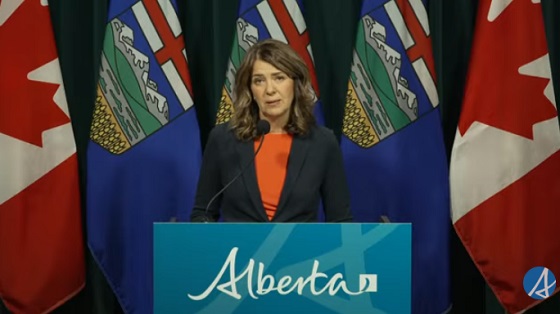
From LifeSiteNews
Premier Danielle Smith said her government will use a constitutional tool to defend a ban on transgender surgery for minors and stopping men from competing in women’s sports.
Alberta Premier Danielle Smith said her government will use a rare constitutional tool, the notwithstanding clause, to ensure three bills passed this year — a ban on transgender surgery for minors, stopping men from competing in women’s sports, and protecting kids from extreme aspects of the LGBT agenda — stand and remain law after legal attacks from extremist activists.
Smith’s United Conservative Party (UCP) government stated that it will utilize a new law, Bill 9, to ensure that laws passed last year remain in effect.
“Children deserve the opportunity to grow into adulthood before making life-altering decisions about their gender and fertility,” Smith said in a press release sent to LifeSiteNews and other media outlets yesterday.
“By invoking the notwithstanding clause, we’re ensuring that laws safeguarding children’s health, education and safety cannot be undone – and that parents are fully involved in the major decisions affecting their children’s lives. That is what Albertans expect, and that is what this government will unapologetically defend.”
Alberta Justice Minister and Attorney General Mickey Amery said that the laws passed last year are what Albertans voted for in the last election.
“These laws reflect an overwhelming majority of Albertans, and it is our responsibility to ensure that they will not be overturned or further delayed by activists in the courts,” he noted.
“The notwithstanding clause reinforces democratic accountability by keeping decisions in the hands of those elected by Albertans. By invoking it, we are providing certainty that these protections will remain in place and that families can move forward with clarity and confidence.”
The Smith government said the notwithstanding clause will apply to the following pieces of legislation:
-
Bill 26, the Health Statutes Amendment Act, 2024, prohibits both gender reassignment surgery for children under 18 and the provision of puberty blockers and hormone treatments for the purpose of gender reassignment to children under 16.
-
Bill 27, the Education Amendment Act, 2024, requires schools to obtain parental consent when a student under 16 years of age wishes to change his or her name or pronouns for reasons related to the student’s gender identity, and requires parental opt-in consent to teaching on gender identity, sexual orientation or human sexuality.
-
Bill 29, the Fairness and Safety in Sport Act, requires the governing bodies of amateur competitive sports in Alberta to implement policies that limit participation in women’s and girls’ sports to those who were born female.”
Bill 26 was passed in December of 2024, and it amends the Health Act to “prohibit regulated health professionals from performing sex reassignment surgeries on minors.”
As reported by LifeSiteNews, pro-LGBT activist groups, with the support of Alberta’s opposition New Democratic Party (NDP), have tried to stop the bill via lawsuits. It prompted the Smith government to appeal a court injunction earlier this year blocking the province’s ban on transgender surgeries and drugs for gender-confused minors.
Last year, Smith’s government also passed Bill 27, a law banning schools from hiding a child’s pronoun changes at school that will help protect kids from the extreme aspects of the LGBT agenda.
Bill 27 will also empower the education minister to, in effect, stop the spread of extreme forms of pro-LGBT ideology or anything else to be allowed to be taught in schools via third parties.
Bill 29, which became law last December, bans gender-confused men from competing in women’s sports, the first legislation of its kind in Canada. The law applies to all school boards, universities, and provincial sports organizations.
Alberta’s notwithstanding clause is like all other provinces’ clauses and was a condition Alberta agreed to before it signed onto the nation’s 1982 constitution.
It is meant as a check to balance power between the court system and the government elected by the people. Once it is used, as passed in the legislature, a court cannot rule that the “legislation which the notwithstanding clause applies to be struck down based on the Charter of Rights and Freedoms, the Alberta Bill of Rights, or the Alberta Human Rights Act,” the Alberta government noted.
While Smith has done well on some points, she has still been relatively soft on social issues of importance to conservatives , such as abortion, and has publicly expressed pro-LGBT views, telling Jordan Peterson earlier this year that conservatives must embrace homosexual “couples” as “nuclear families.”
-

 Business15 hours ago
Business15 hours agoCanada is failing dismally at our climate goals. We’re also ruining our economy.
-

 Daily Caller2 days ago
Daily Caller2 days agoDemocrats Explicitly Tell Spy Agencies, Military To Disobey Trump
-

 Alberta1 day ago
Alberta1 day agoAlberta on right path to better health care
-
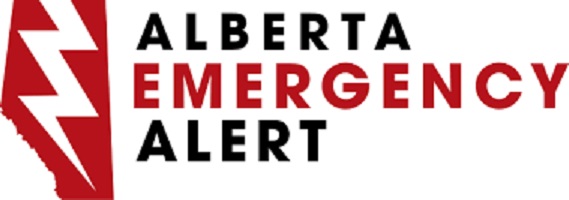
 Alberta1 day ago
Alberta1 day agoAlberta Emergency Alert test – Wednesday at 1:55 PM
-

 Crime1 day ago
Crime1 day ago‘Modern-Day Escobar’: U.S. Says Former Canadian Olympian Ran Cocaine Pipeline with Cartel Protection and a Corrupt Toronto Lawyer
-

 Business2 days ago
Business2 days agoClimate Climbdown: Sacrificing the Canadian Economy for Net-Zero Goals Others Are Abandoning
-
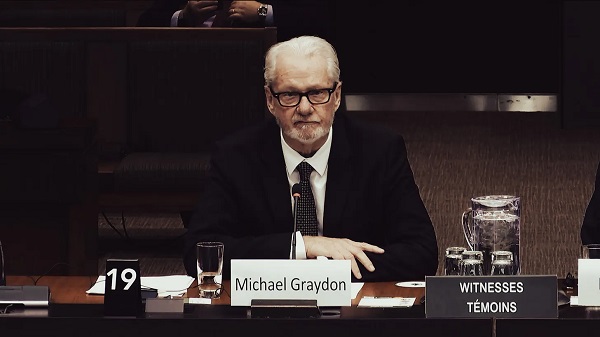
 Business2 days ago
Business2 days agoNearly One-Quarter of Consumer-Goods Firms Preparing to Exit Canada, Industry CEO Warns Parliament
-

 Great Reset2 days ago
Great Reset2 days agoAre climate-obsessed elites losing their grip over global politics?











